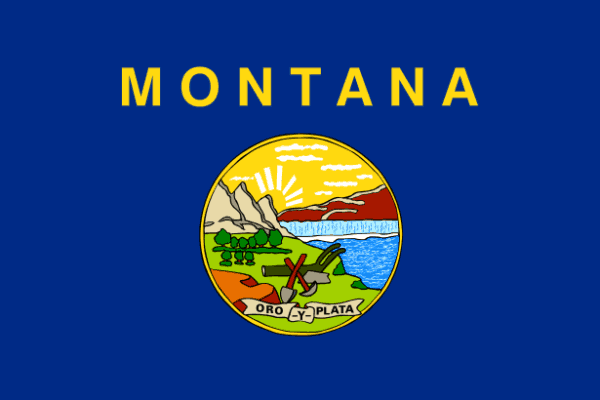Can Montanans Keep Their State White?
Peter DeWitt, American Renaissance, June 2011

After living and working in Montana for nearly four years, I finally attended my first authentic rodeo. Like the state, the attendance at the Great Falls rodeo was nearly all Caucasian. There were young families, aging cowboys, and even teenagers dressed in cowboy hats, flannel shirts, and boots. The lights went down, and someone read a story about the challenges and achievements of the United States, and then we sang the national anthem. A young blonde cowgirl on a white horse then swept around the arena waving the American flag.
As I watched the bronco riding and barrel racing I was struck by the audience’s blissful ignorance. Parents don’t worry about their teenage daughters being assaulted by Muslims as parents in Europe and Australia must. No one worried about being mugged in the parking lot or returning to a vandalized vehicle. Certainly no one worried about being carjacked and raped. For those who are not forced to live with it, diversity and the destruction it brings are invisible — until it is too late.
Crime rates in Montana are the seventh lowest in the nation, and all the states that are safer have one striking similarity: they have the highest percentages of whites. The safest states are, in order, New Hampshire, Vermont, North Dakota, Maine, Idaho, and Wyoming. The western states, particularly Montana, fall behind eastern states because of their Indian populations, which commit violent crime at more than three times the white rate.
Former Constitution Party candidate Chuck Baldwin, who moved to Montana this summer, recently gave a stirring speech in Kailispel, in the Northeast corner of the state. The event was called “Montana: The Tip of the Spear,” and promoted the idea that the Rocky Mountain West and Montana, in particular, will be the center of the “fight for liberty.” As he explained, “There are a lot of people, like me, who were not born in Montana but we have been Montanans our whole lives.” I believe it is true, as Mr. Baldwin says, that “real Montanans will fight and die for the principles of truth, honor and freedom.”
Montanans have a fierce independence and a healthy suspicion of the federal government, but most are unaware of the dangers of diversity. Many people I’ve met in this state have fled diversity and readily admit it; however; others move from diverse areas and still claim that “diversity is our strength.” Bozeman is notorious for its influx of Californians who refuse to acknowledge they fled California because of the very liberal ideology they now promote.
After the final event, bull riding, the crowd began to exit and I was struck by the civility of this mass departure. There was no pushing, but plenty of “excuse me”s. There had been beer and snacks for sale, but there was no littering. Plenty of people had bought 24-oz cans of Coors or Coors Light, but the crowd did not leave a single one in the stands; every one went into the recycling bins.
The order and safety and even the very atmosphere of the Great Falls rodeo would be swept away by “diversity.” I drove away from the stadium that night feeling a great sense of pride, but also a sense of urgency. Unless Montanans understand the threat diversity and multiculturalism pose to our culture, their state could quickly become like others. Only a collective white consciousness will save the few remaining Montanas from the curse of diversity.















